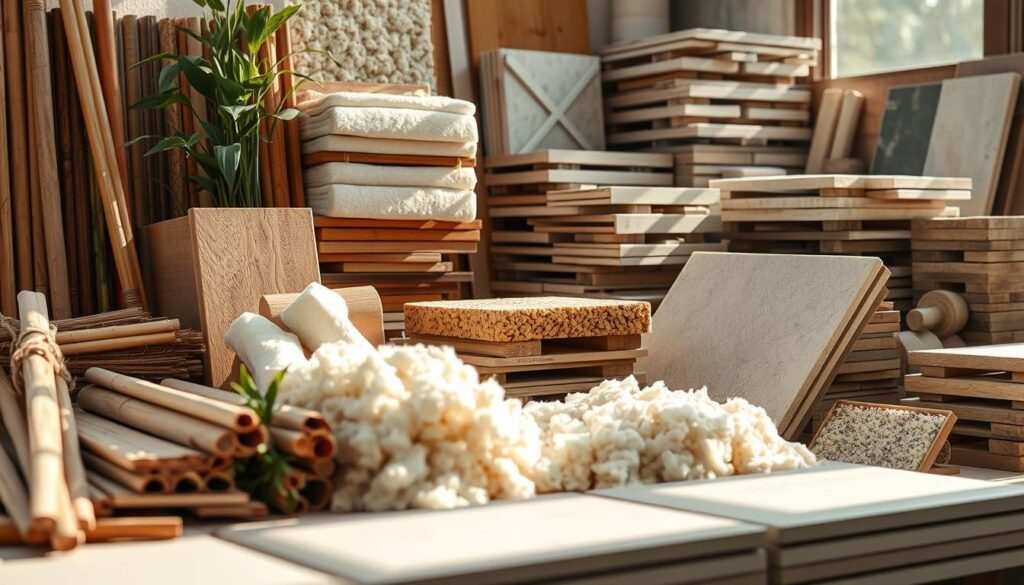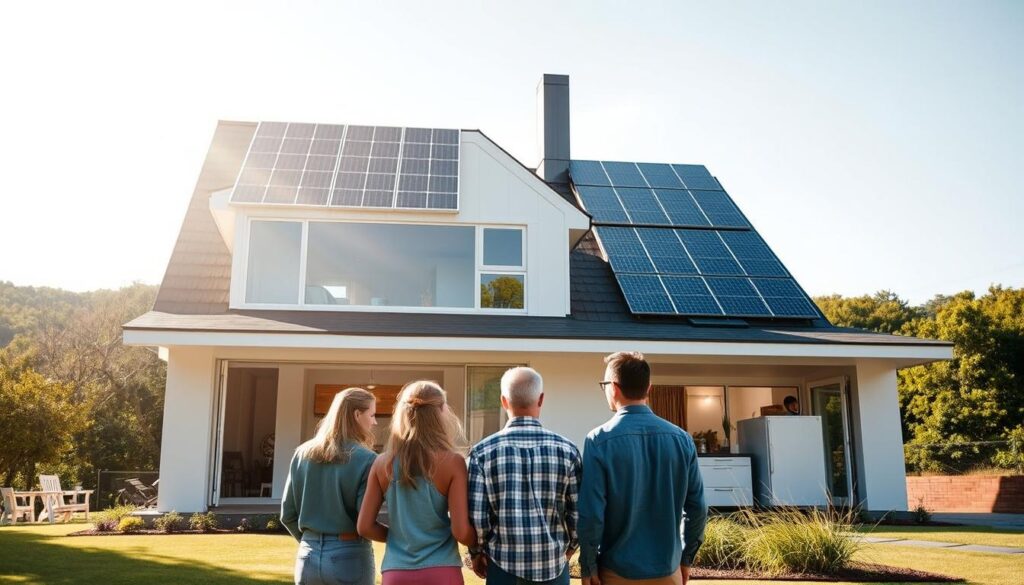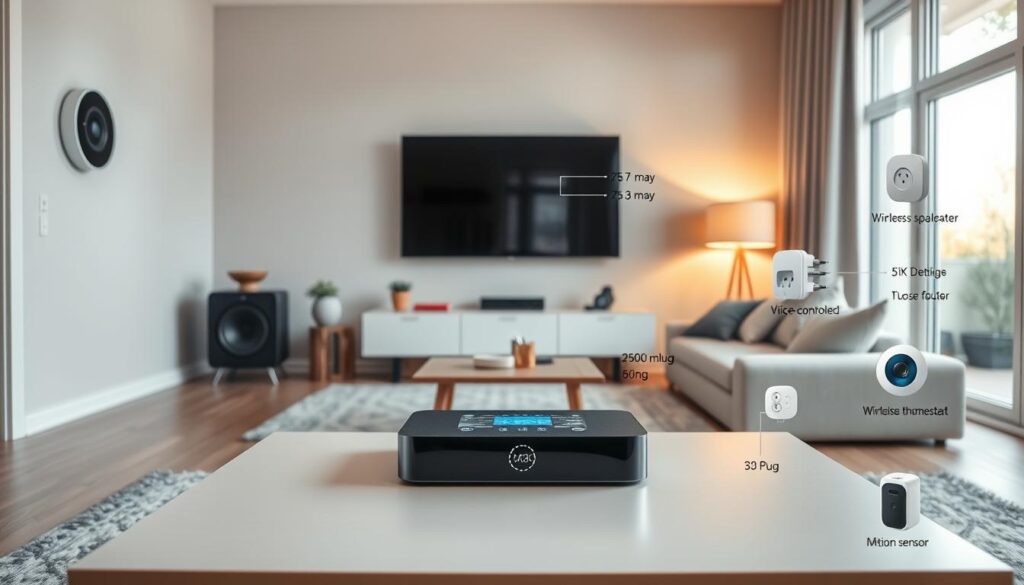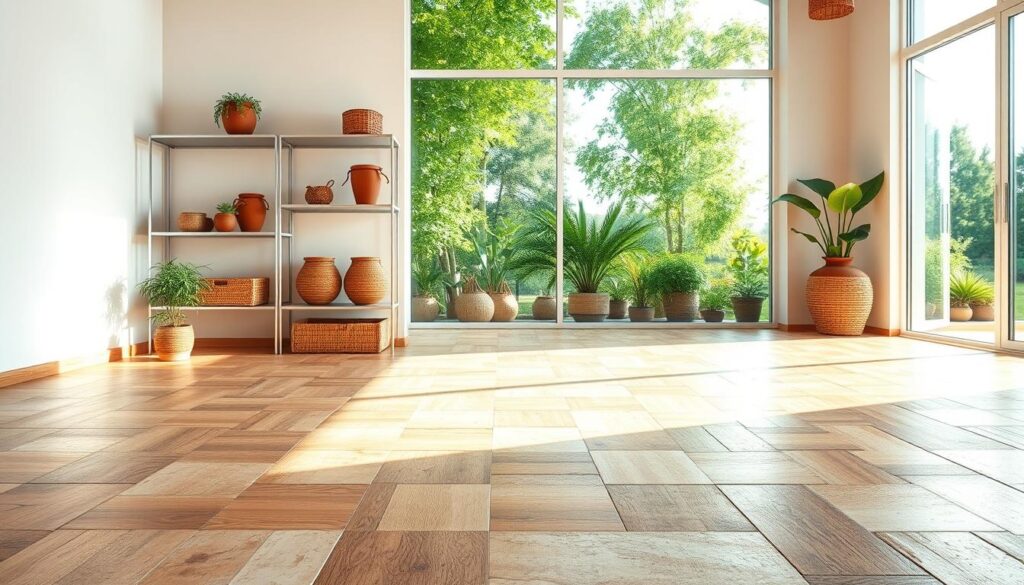Let me tell you about my neighbors, the Garcias. Last summer, they transformed their drafty 1980s ranch house into an energy-efficient oasis—and the change was incredible! While chatting over iced tea on their new reclaimed wood patio, Maria shared how their sustainable home upgrade cut their energy bills by 40% and made their family healthier. That conversation sparked my journey into understanding how our living spaces impact both our lives and the planet.
Did you know buildings create 30% of global greenhouse gas emissions? That statistic hit me like a ton of bricks. But here’s the good news: every choice we make—from lightbulbs to flooring—can become a powerful step toward sustainability. I’ve discovered that creating a thoughtfully designed space isn’t just about looking good—it’s about doing good.
Through trial and error (and plenty of research!), I’ve learned that true sustainability goes beyond recycling bins. It’s a holistic approach blending smart technology with nature-inspired solutions. We’ll explore how strategic material choices and energy systems can slash your carbon footprint while creating spaces that feel better to live in.
What excites me most? These changes don’t require sacrifice. My friend’s “green” kitchen remodel added value to her property while using 50% less water. That’s the magic of sustainable design—it benefits both your wallet and the environment. Ready to discover how small tweaks can make big impacts? Let’s dive in!
Understanding the Fundamentals of Sustainable Home Design
Did you know proper insulation can slash heating costs by 20%? That fact reshaped how I view upgrades. True sustainability blends four key elements: smarter energy use, water conservation, thoughtful material choices, and healthier indoor spaces. Let’s break down what this means for your living environment.

Defining Sustainability in Home Creation
When I helped my cousin renovate, we focused on energy efficiency first. Strategic window placement and LED lighting cut their power bills. But it’s not just about watts—proper insulation creates cozy rooms that stay warm naturally.
Water-saving tactics surprised me most. Installing aerated faucets reduced their usage by 40%, while a rain barrel system nourishes their garden. Materials matter too—we chose bamboo flooring that’s tougher than oak and grows back faster.
Environmental and Economic Impacts
Every choice ripples outward. Energy-smart building practices could reduce global greenhouse gas emissions by 8% annually. But the personal benefits shine too—my friend’s asthma improved after switching to zero-VOC paint.
Long-term savings add up fast. Those efficient windows I mentioned? They paid for themselves in 3 years through lower bills. And homes with sustainable features sell 7% faster, according to Realtor.com data. It’s a win for your wallet and the planet.
Incorporating eco-friendly home design into Your Space
Remember my friend’s kitchen remodel that slashed her water use? The secret wasn’t fancy gadgets—it was thoughtful material choices paired with smart upgrades. Let’s explore how to blend character and practicality in your next project.

Choosing Recycled and Locally Sourced Materials
I’ve fallen hard for materials with history. Reclaimed barn wood adds rustic charm to floors, while vintage bricks create stunning accent walls. Last month, I helped source recycled glass countertops for a client—each slab tells a unique story through its swirling patterns.
Local sourcing cuts transportation emissions dramatically. My go-to supplier delivers regionally quarried stone within 50 miles. Bonus? These pieces connect your space to the surrounding landscape in meaningful ways.
Energy-Efficient Windows, Doors, and Insulation
Here’s a game-changer I learned the hard way: 40% of heat loss happens through windows and doors. Triple-paned glass with low U-factor ratings keeps my sunroom cozy year-round. Look for the Energy Star label—it’s your shortcut to quality.
Don’t overlook what’s inside your walls! Recycled denim insulation surprised me with its performance. It’s non-toxic, handles temperature swings beautifully, and muffles street noise better than traditional options.
These choices create spaces that feel different—warmer in winter, cooler in summer, and brimming with personality. Best part? They’re investments that pay dividends through lower bills and lasting comfort.
Maximizing Energy Efficiency and Reducing Utility Bills
Last winter, I nearly fell off my chair when my heating bill arrived—it was 30% lower than the previous year! The secret? Strategic upgrades that work smarter, not harder. Let’s explore how modern systems and simple tweaks can transform your energy use without sacrificing comfort.

Smart Climate Control Solutions
My neighbor’s “aha moment” came with their tankless water heater. These compact units heat water only when needed, cutting energy waste by up to 34% compared to traditional tanks. For efficient home design, pair them with heat pumps—these marvels transfer warmth instead of generating it, using half the electricity of conventional systems.
Wireless thermostats became my personal game-changer. Mine learns our family’s rhythms, adjusting temperatures automatically when we’re asleep or out. The result? A 12% drop in annual energy use without lifting a finger.
The Insulation Advantage
Here’s what most homeowners miss: even the best HVAC needs proper insulation to shine. I upgraded my attic with cellulose insulation last fall—it’s like wrapping your house in a thermal blanket. Combined with sealed ductwork, it helped reduce my heating and cooling costs by nearly $40/month.
These changes create a ripple effect. Lower utility bills, quieter rooms, and consistent temperatures make every season more enjoyable. Best part? Many upgrades qualify for tax credits, making them smarter investments than ever.
Utilizing Smart Home Technologies for Sustainability
I nearly cried happy tears when my smart thermostat alerted me to an open window during a heatwave—it had already adjusted the AC to compensate! Modern smart home technologies turn sustainability from a chore into a seamless part of daily life. Let’s explore how these tools create energy-smart living spaces that adapt to your needs while protecting resources.

Integrating Smart Thermostats and Energy Star Appliances
My Nest thermostat became our family’s invisible efficiency coach. After learning our schedule, it now pre-cools bedrooms before bedtime and lowers temps when we’re out. Pair this with Energy Star appliances, and you’ve got a powerhouse combo. Did you know these certified units use 15% less electricity than standard models? Many states even offer rebates—I saved $200 on my dishwasher upgrade!
Automating Lighting, Irrigation, and Water Monitoring
Phillips Hue lights transformed my evenings. They gradually dim as night falls, reducing eye strain and power use. Outdoors, Rachio’s smart sprinkler cut my water bill by tracking weather patterns—no more watering before rainstorms! For real-time insights, Moen’s Flo detector scans pipes for leaks 24/7.
These technologies create homes that work smarter, not harder. Best part? They blend into the background while delivering serious savings. My favorite discovery? Smart plugs that eliminate vampire energy drain—I finally stopped paying for phantom device power!
Exploring Sustainable Materials and Innovative Building Techniques
Last month, I visited a friend’s newly built cottage made entirely from shipping containers—and it blew my mind! The industrial-chic space proved how creative building techniques can transform discarded materials into stunning, functional homes. Let’s dive into methods that redefine what modern construction can achieve.

Prefabrication and Reuse Strategies
Factory-built components are changing the game. Prefabricated walls and roofs arrive ready to assemble, slashing construction time by up to 50%. I’ve seen these techniques reduce material waste at job sites—one sustainable building project reused 98% of their scrap wood for art installations!
Salvaged materials add soul to spaces. My cousin’s kitchen features century-old barn beams supporting modern cabinets. Metal scraps become sculptural light fixtures, while chipped bricks form rustic garden paths. These options preserve history while conserving resources.
Modern Approaches Like Straw Bale and Shipping Container Homes
Straw bale construction surprised me most. Thick walls packed with hay provide insulation three times better than standard fiberglass. They’re fire-resistant and need almost no maintenance once sealed with natural plaster.
Those shipping container homes? They’re not just trendy—they’re practical. My friend’s 2-container setup took 6 weeks to build versus 6 months for traditional framing. Bonus? Each recycled unit keeps 3,500 kg of steel out of landfills.
These innovative designs prove sustainability doesn’t mean sacrificing style. Whether you choose prefab efficiency or upcycled charm, you’re creating living spaces that respect both nature and creativity.
Implementing Renewable Energy Options for a Greener Home
I’ll never forget the day I realized my roof could power my entire house. During a neighborhood blackout, my friend’s solar-powered lights stayed bright while the rest of us fumbled with flashlights. That moment changed how I view energy solutions—and it might shift your perspective too.
Harnessing Nature’s Power Source
Modern solar panels work like magic. They convert sunlight into electricity through photovoltaic cells—no moving parts required. My aunt’s system generates enough power for her 3-bedroom house and charges her EV. Best part? Her monthly bills dropped 60% after installation.
Today’s options blend function with style. Slim-profile panels now mimic slate roofing, while frameless designs create sleek silhouettes. I recently saw a historic brownstone with solar shingles that looked identical to its original roof tiles—you’d never guess they’re energy producers!
These systems require minimal upkeep. A quick rinse twice a year keeps them efficient. During last winter’s ice storm, my neighbor’s panels kept humming while others lost power. That reliability? Priceless.
Switching to solar isn’t just about savings—it’s a carbon-cutting powerhouse. The average household prevents 3-4 tons of emissions yearly. Combine panels with battery storage, and you’ve got a self-sufficient setup that thrives even when the sun takes a break.
Looking ahead, renewable energy isn’t just the future—it’s today’s smartest upgrade. Whether you start small with a solar water heater or go all-in with full electrification, every watt from the sun moves us toward cleaner air and stable bills. Ready to let your roof pull double duty?
Eco-Friendly Home Design: Reducing Your Carbon Footprint and Utility Bills
Last week, I spotted my first firefly of summer while sitting in a zero-energy sunroom – a moment that crystalized why these efforts matter. Our daily choices ripple outward, shaping both personal comfort and planetary health.
Assessing the Long-Term Environmental Benefits
That statistic about buildings causing 30% of global emissions? It’s not just a number – it’s a call to action. Every efficient window we install or low-flow showerhead we choose chips away at that percentage. Over decades, these upgrades compound like interest in a savings account for the Earth.
Smart Practices for Daily Energy Efficiency
Small habits make big differences. I’ve learned to “dress” my house seasonally – thermal curtains in winter, cross-breeze strategies in summer. Programmable thermostats and LED bulbs now feel like second nature, quietly trimming my bills while protecting resources.
The real magic happens when design meets daily life. By choosing solutions that reduce your carbon, we create spaces that nurture both people and the planet. My favorite bonus? Watching neighbors get inspired – sustainability spreads faster than dandelion seeds when results speak for themselves.

That’s a solid point about game design influencing player habits! Seeing platforms like Winph99 prioritize secure logins & KYC really builds trust. Check out the winph99 app download for a smooth, verified experience – legit platforms are key! 🤔